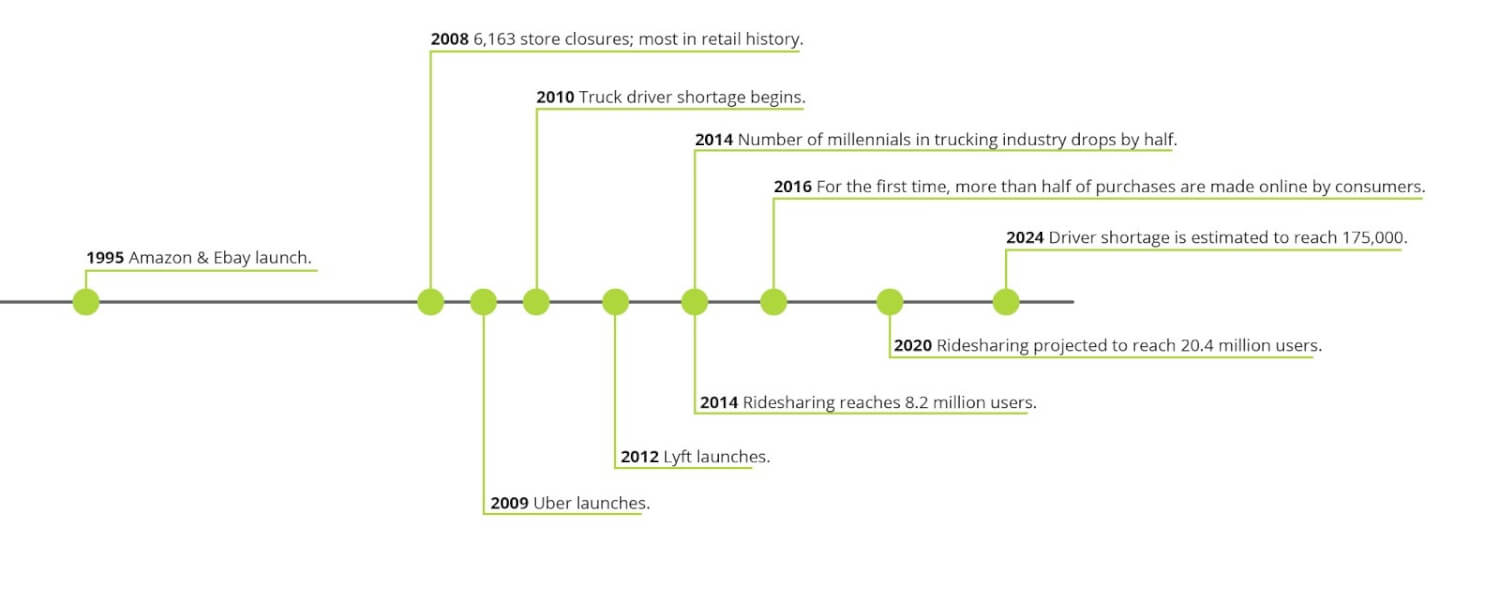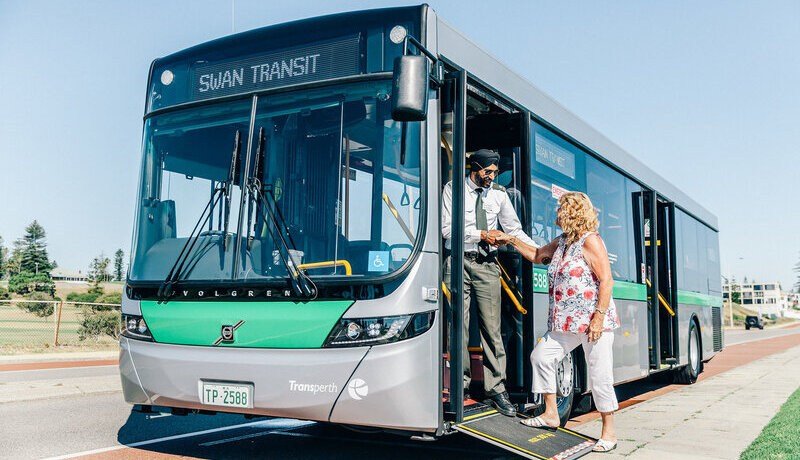The Changing Nature of the Fleet
The world is changing in innumerable ways, from the methods we use to communicate to the way we shop and conduct business. And as industries change, they often set off a domino effect that disrupts the course of other industries.
It’s hard to think of an industry that’s been reshaped by as many cultural and marketplace changes as fleet management and transportation in recent years.
Retail deliveries are increasingly warehouse-to-consumer rather than warehouse-to-store.
COVID-19 has dramatically accelerated the volume of warehouse-to-consumer deliveries, a trend which was already building steam previously, reflecting the rising popularity of companies like Amazon and other ship-to-home services. Long-standing brick-and-mortar retailers have closed their doors altogether or downsized, and consumers are moving increasingly online as their shopping venue of choice. Many analysts expect this trend to further intensify in the years to come.

This shift is not only affecting the business models of retailers, but also those of fleets, as retail deliveries make up a large portion of fleet business. Many fleets have shifted their focus to services like last-minute delivery and difficult-to-handle goods like furniture. As the trucking industry is already responsible for nearly 70% of freight moved in the U.S., it is clear how important it is the these companies have enough drivers to meet the demand.
Truck drivers are ageing out and quitting.
Unfortunately the growing demand for truck drivers is not being met. Though 1 in 15 Americans is employed as a truck driver, many companies are facing driver retention issues. The American Trucking Associations (ATA) estimate that the driver shortage will amount to a lack of nearly 175,000 by 2024.
Part of this issue may be attributed to the average age of truck drivers, currently hovering near 49 years old. Many are retiring with no new young recruits to take their place. Millennials make up more of the overall U.S. workforce than other generations, but the number of 25- to 34-year-olds in the trucking industry has dropped by 50% in recent years, according to the American Transportation Research Institute. Additionally, recent ATA research found that 88% of surveyed fleet companies said most of the applicants they receive are not qualified for their open positions.
Driver retention is the biggest issue accounting for the driver shortage. Nearly half of new drivers quit within six months, citing low pay and decreased union support.
Over time, fleets will likely begin switching to more user-friendly vehicles with automatic transmission and easier steering to reduce the rate of unqualified drivers, and eventually switch to fully autonomous vehicles. In the meantime, fleet companies have begun to realize the great potential of fleet management and driver engagement programs as a way to solve both the current driver shortage and safety concern issues.
Fleet management and employee engagement are converging with mobile apps that gamify safe driving and telematics.
Fleets across industries originally believed the introduction of traditional track-and-trace telematics would be the key to solving safety issues, hoping that more visibility would make it easier to streamline efficiencies and cut unnecessary costs. But they have learned that implementing telematics without concurrently implementing an employee engagement program often backfires by leading to issues of distrust and job dissatisfaction among employees.
Additionally, with leased vehicles becoming more and more prevalent for fleets and mobile workforces, the cost and manpower spent installing outdated telematics hardware to track and optimize fleets are becoming harder to justify. Still, fleets need the visibility these tools provide to operate at their best potential.
Today’s mobile driver safety apps are able to deliver on all fronts.
Driver safety apps can not only reduce accident rates, driver injuries and fatalities, they can keep drivers alert and engaged while spending long hours on the road. When the driving experience with dynamic safety scores and incentives, employees are more incentivized to improve their driving performance and more focused on the task at hand — safe driving.
With such an imperative need for safe drivers, both fleets and mobile workforces cannot wait around for the autonomous cars of the future to solve the growing employee gap. Rather, they should focus on cultivating the drivers they have now to become safer and more engaged, laying the foundation for higher attraction and retention rates in the near future.





